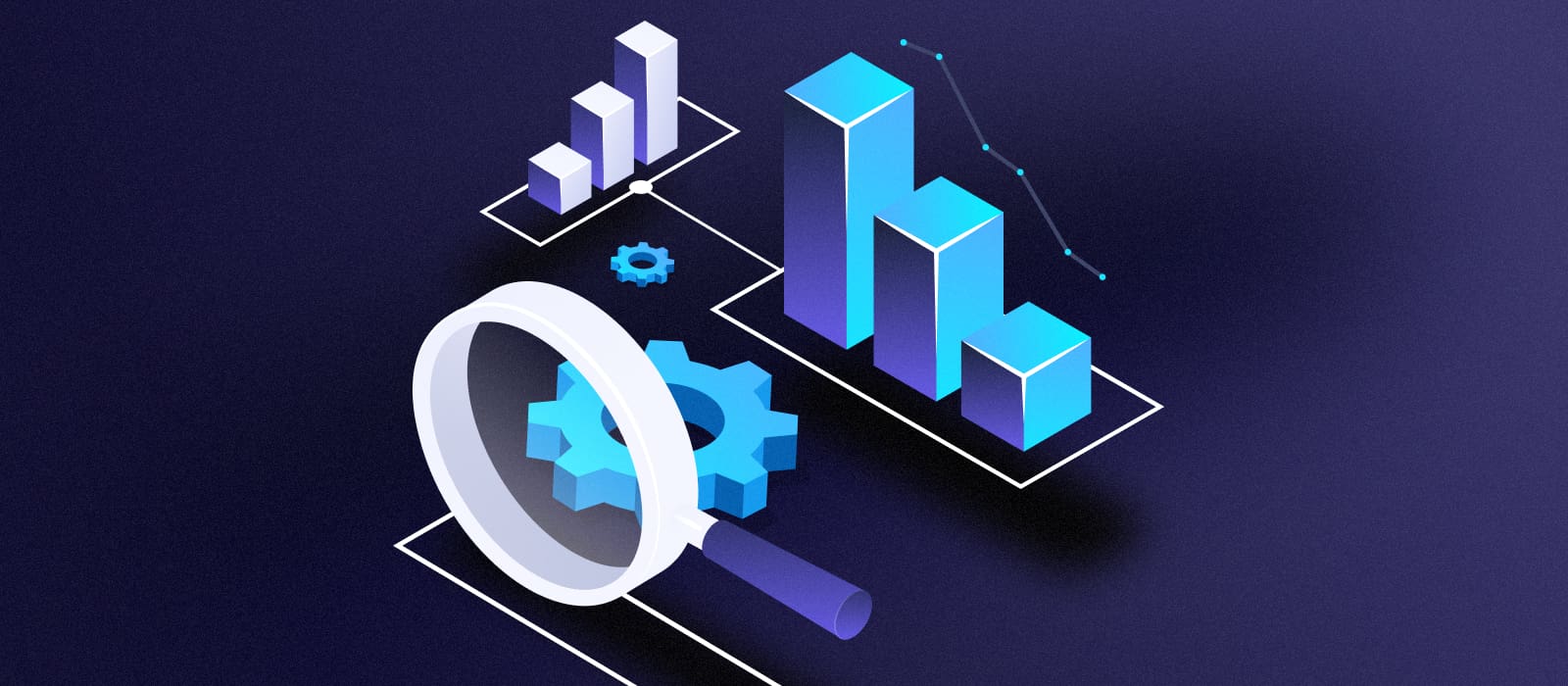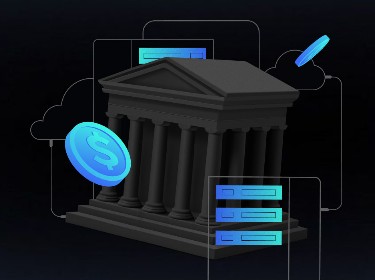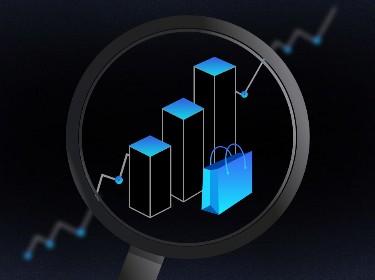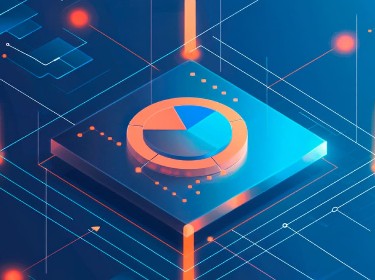Data is an inexhaustible source of insights that helps businesses scale and stay competitive. That’s why data analytics is no longer just an option but a must for any organization aspiring to thrive in today’s dynamic market.
Data analytics has proven extremely useful for a variety of business aspects, from more well-founded decision-making and optimized workflows to reduced costs and minimized risks.
The growing recognition of data analytics potential has led to a remarkable expansion of the global data analytics market, which is projected to reach $745.15 billion by 2030.
In this article, we will explore key benefits data analytics offers businesses and take a look at the top data analytics trends in 2023. As a bonus, we will provide a list of useful tips to consider when leveraging business data analytics.
What are the business benefits of data analytics?
![]()
Enterprises that adopt data analytics reap many substantial benefits, namely:
- Informed decision-making — data analytics supplies businesses with evidence-based insights, enabling more informed and accurate decision-making across various departments and processes of the organization.
- Improved efficiency — by analyzing operational data, businesses can identify bottlenecks, streamline processes, and optimize resource allocation, achieving improved efficiency and increased productivity.
- Better customer understanding — by thoroughly processing and analyzing client-related data, businesses gain a deeper understanding of customer behavior, preferences, and needs, enabling the creation of personalized experiences and targeted marketing strategies.
- Higher competitive advantage — data analytics empowers companies to stay one step ahead of the competition by accurately predicting and identifying market trends, comprehending customer demands, analyzing competitors, and swiftly responding to changing market conditions.
- Cost optimization — with data analytics, businesses can uncover cost-saving opportunities, such as more efficient energy consumption, optimal resource allocation, and timely errors and risk identification.
Discover how we leveraged data analytics to create a web3 security solution
What are the top data analytics trends?
![]()
There are many different data analytics trends businesses should know about, including the integration of artificial intelligence, synthetic data, business intelligence, edge computing, and data-as-a-service.
Here is a detailed overview of each trend.
Artificial intelligence
Artificial intelligence (AI) completely changes the way organizations analyze their data. This technology is capable of processing huge amounts of data and finding dependencies, patterns, and anomalies that would otherwise be hard to detect. This way, companies can perform data analytics faster and more efficiently.
AI-powered data analytics involves the integration of machine learning algorithms, natural language processing (NLP), computer vision, and other AI techniques.
Data analytics aspects enhanced by AI include:
- Data preprocessing — AI can clean, transform, and preprocess raw and unstructured data. It involves handling missing values, outlier detection, data imputation, and data normalization to ensure the data is adequate and in a suitable format for analysis.
- Multi-format data analysis — with the help of NLP and computer vision techniques, businesses can execute analytics of various data formats, including texts, visuals, audio, or video recordings. This way, AI broadens the scope of data analytics by helping extract valuable insights from various and unorganized data sources.
- Predictive analytics — AI models are able to process historical data to forecast trends, behaviors, and outcomes, enabling businesses to make informed decisions and plan solid strategies.
- Data visualization — AI-powered tools can generate interactive and visually appealing data visualizations, making it easier for organizations to comprehend complex information and explore data more intuitively.
- Anomaly detection — AI algorithms effectively spot unusual patterns or anomalies in data, helping businesses detect potential fraud, security breaches, or other abnormal activity.
- Personalization — AI and data analytics are a powerful combo for the creation of personalized customer offerings and experiences. By analyzing user behavior and preferences, AI can recommend products, services, or content that are more likely to resonate with a particular person, increasing their satisfaction and loyalty.
Get acquainted with our AI development services
Synthetic data
Synthetic data is generated artificially, preserving some statistical characteristics of real data. The use of synthetic data became a big data analytics trend since it allows businesses to:
- Maintain confidentiality — synthetic data prevents the exposure and exploitation of people’s and industry’s sensitive data while not curbing the process of data analytics.
- Overcome data limitations — when obtainable data is not enough for making well-grounded decisions, enterprises can generate synthetic data and conduct proper data analytics.
- Manage imbalanced data — synthetic data can help balance class distributions in datasets, mitigating biases and improving the accuracy of data analytics.
- Simulate scenarios — with the help of synthetic data, businesses can create possible scenarios and test their suggestions, thus assessing their feasibility and potential risks.
Business intelligence
Business intelligence (BI) tools facilitate data analytics efficiency by providing powerful and user-friendly platforms able to gather, process, analyze, and visualize data. These tools are designed to help businesses make data-driven decisions, gain insights from their data, and uncover valuable patterns and trends.
The features of BI tools that make them a tangible data analytics trend are:
- Interoperability — BI tools can connect to various data sources, including databases, spreadsheets, cloud services, and other applications. This enables businesses to consolidate and integrate data from different sources into a single, centralized platform, making it easier to analyze and gain a comprehensive view of the processes.
- Data preprocessing — data analysts can clean and preprocess data with the help of BI solutions, ensuring its accuracy and consistency.
- Data visualization — BI tools transform data into graphic and interactive charts, graphs, dashboards, and reports to represent complex information in an easily understandable format.
- Data exploration — BI solutions allow for navigating through data at different levels, drilling down into specific data points. This ability makes it possible to identify root causes and hidden insights.
- Collaboration and data sharing — with BI tools, data analysts can easily share dashboards, charts, and reports with other team members. This fosters data-driven decision-making across the organization and ensures that stakeholders have access to relevant information.
- Mobile accessibility — many modern BI instruments, including Tableau and Power BI, support mobile devices, enabling users to access and interact with data analytics on their smartphones and tablets, increasing accessibility and enabling on-the-go decision-making.
Edge computing
Edge computing is an infrastructure between the data source (ex. internet of things devices, sensors, smartphones) and centralized data centers or cloud environments. Edge computing allows to process, analyze, and store data close to where it comes from, rather than sending it to remote data centers or servers.
This approach allows for greater convenience, faster processing times, and reduces costs associated with data transfer, so no wonder it is one of the current data analytics trends.
Here are some ways edge computing is used in data analytics:
- Real-time data processing — edge devices enable immediate data processing and analysis which is essential, for example, in IoT applications, where data is generated rapidly and needs to be analyzed without delays.
- Data filtering — edge nodes can preprocess and filter data before sending it to the central data center or cloud. This reduces the volume of data that needs to be transmitted, reducing the network load and data storage costs.
- Predictive maintenance — edge computing can facilitate predictive maintenance by analyzing equipment data locally through sensors and devices and detecting signs of potential failures.
- Offline operation — some edge computing components continue functioning even if they lose internet connection. This ensures uninterrupted operations in remote or intermittent network environments.
- Data security — edge computing addresses data security concerns by processing sensitive data locally at the edge. This minimizes the risk of data exposure during transmission and enhances overall data privacy.
Data-as-a-Service
Data-as-a-service (DaaS) is a cloud-based data management model, with data being hosted and managed by a third-party service provider, who makes it accessible to clients on a subscription or pay-per-use basis.
DaaS is steadily gaining traction in data analytics thanks to its many tangible benefits, including:
- Data accessibility — DaaS providers offer centralized platforms where users can access a wide variety of data, be it structured, semi-structured, or unstructured, without needing to physically store or manage the data themselves.
- Data integration — data obtained from DaaS providers can be integrated directly into a company’s applications and solutions through various models, including web APIs, RESTful endpoints, or data streaming services.
- Data quality — reputable DaaS companies ensure a high level of data accuracy, security, and compliance with relevant regulations.
- Cost-effectiveness — DaaS eliminates the need for clients to invest in expensive hardware, software, and data management infrastructure. Clients pay for the data they access and use, making it a cost-effective option, especially for smaller businesses.
How do you perform unstructured data management? Here is our detailed guide
How to successfully leverage data analytics for your business?
To use your data to the fullest and achieve the best results from data analytics, you should work out a robust implementation strategy.
Here are 7 vital tips that will help you in establishing effective data analytics processes for your organization:
- Set clear objectives — determine what exact improvements and business goals you seek to accomplish with the help of data analytics.
- Organize high-quality data collection — ensure you have access to relevant and accurate data and can maintain effective data processing and structuring to eliminate imbalance, bias, or knowledge gaps.
- Choose suitable data analytics solutions — select appropriate data analytics tools and technologies based on your business needs. These may include data visualization tools, machine learning frameworks, business intelligence platforms, etc.
- Gather a skilled data analytics team — to correctly interpret the data and derive meaningful insights, you need an in-house or outsource team of experienced data analysts and data scientists. When choosing a reliable partner, make sure they have expertise in relevant technologies and services, including data analytics implementation, ML consulting, and AI algorithms development.
- Arrange relevant employee training — invest in training programs to enhance data literacy across the organization. Ensure that employees understand the value of data analytics and know how to leverage it effectively.
- Ensure data security — always prioritize data security and compliance with your industry regulations to safeguard your business from reputational and financial losses.
- Monitor key performance indicators (KPIs) — define relevant KPIs to track the success of your data analytics initiatives and regularly review and assess the impact of data-driven decisions on your business performance.
Data analytics in action: Patientory mobile health app by PixelPlex
Our team knows the game-changing capabilities of data analytics very well, as we’ve delivered many successful solutions based on this technology. Patientory is one of them.
It is a blockchain-based mobile health application. The main goal of the solution is to provide users with well-structured information about their health and allow them to securely access and share their medical records.
To achieve this, our IT consulting team created a detailed health questionnaire and ensured the app’s compatibility with Apple Watch and Fitbit for healthcare data collection. Patientory’s data analytics mechanism processes and analyzes the input data and presents individual user care plans.
These plans feature a weekly schedule of various physical activities, such as walking, running, and swimming, with time specifications. Apart from the exercises, the data analytics module determines individual nutrition specifications and wellness practices.
All health information is visualized in the form of personalized medical dashboards, helping users better understand their current health state and keep track of their progress.
Furthermore, our custom software development services integrated a sophisticated data aggregator mechanism that enables users to view and interact with their medical records from different healthcare providers.
Thanks to data analytics, Patientory empowers users with actionable insights regarding their heaths, allowing them to take better care of themselves and live healthier and more fulfilling lives.
Conclusion
Data is indeed a gold mine of endless revelations and an invaluable booster for business growth. Successful companies recognize this and are increasingly incorporating data analytics into their workflows. By harnessing the power of data, they make data-driven decisions that lead to better products, more effective marketing strategies, and streamlined operations.
Our experienced data analysts will be glad to assist you in integrating data analytics into your business. Our team will work closely with you to understand your specific needs and challenges, ensuring that the data analytics solutions are tailored to your unique requirements.
Reach out to us, and let’s harness the power of data together.




